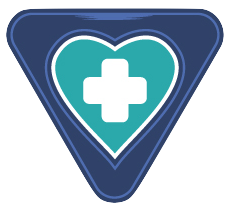When taking Orilissa, it is important to be aware of the potential side effects that may occur. Some of these side effects are more common than others and may include temporary symptoms that resolve on their own. However, if these side effects persist, worsen, or become severe, it is crucial to speak with your healthcare
Womens Health
Menopause joint pain, also known as menopausal arthralgia, is a common symptom experienced by people during the menopausal transition. Menopausal arthralgia can affect various joints, including the hands, knees, hips, or spine. People may experience aching, stiffness, and swelling in the joints. Joint pain is common during the menopausal transition. Exactly how many people experience
Brachytherapy is a form of internal radiation therapy often recommended to individuals undergoing treatment for endometrial cancer. This type of treatment involves the insertion of radioactive material into the body to target and destroy cancer cells. According to the American Cancer Society (ACS), brachytherapy is frequently used following surgery to remove the uterus and cervix.
Hormone Replacement Therapy (HRT) has the potential to affect menstrual cycles in various ways, depending on the specific treatment type and the desired outcome. It is crucial to understand how different types of HRT can impact periods and what signs indicate that the therapy is or isn’t working as expected. There are several types of
There is growing evidence suggesting that menopause may exacerbate symptoms of Attention Deficit Hyperactivity Disorder (ADHD) in individuals who already have the condition. This could be attributed to the decrease in estrogen and progesterone levels, as well as a drop in dopamine levels – which are typically lower in females with ADHD. While many individuals
Endometriosis is a complex condition that can manifest in various parts of the body, including the cul-de-sac, also known as the rectouterine pouch or the pouch of Douglas. Situated between the rectum and the back of the uterus, the cul-de-sac is a common area affected by endometriosis. This form of the disease can be particularly
Metastatic endometrial cancer is a form of cancer that begins in the endometrium, the lining of the uterus, and spreads to other areas of the body. The cancer is staged from 1 to 4, with higher numbers indicating more advanced stages where the cancer has spread further from the original site. The most common sites
As females age, the risk of developing breast cancer increases significantly. Most breast cancers are detected in females aged 45 years or older, with the average age of diagnosis being around 62 years. However, the challenge lies in recognizing the early signs of breast cancer in older females, as age-related factors can complicate the detection
Extended-cycle birth control pills are a type of combination oral contraceptive that involves taking an active pill daily for around 84 days before pausing for a 7-day break for withdrawal bleeding. This type of birth control deviates from the traditional monthly cycle by extending the gap between vaginal bleeding episodes. Unlike the typical 21 active
Inflammatory bowel disease (IBD) is a complex condition that affects the gastrointestinal tract and can present differently in females compared to males. While common symptoms such as stomach cramping and persistent diarrhea are seen in both genders, females may also experience a range of unique symptoms including painful menstruation, fertility issues, anemia, and pain during
